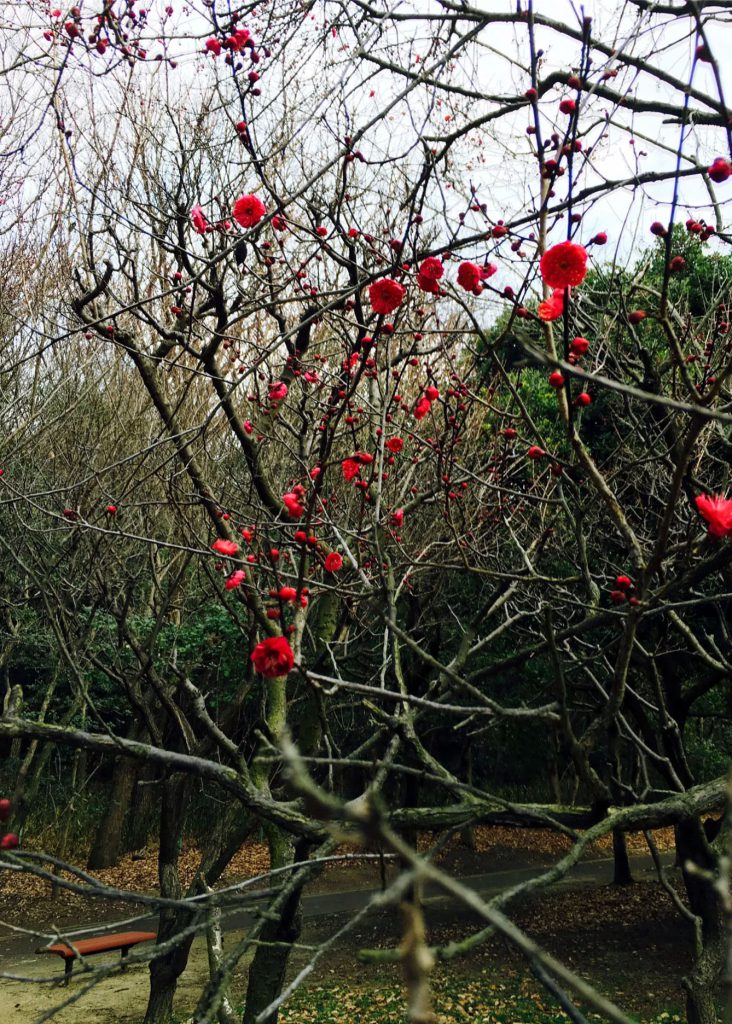
When I visit the plum garden nearby, the red plum blossoms are blooming here and there. The plum season is finally here. The blossoming of plum blossoms is called “hokorobu”, and the falling of plum blossoms is called “koboreru”. Ume, which has a pure beauty different from that of cherry blossoms, was brought to Japan from its native China for medicinal purposes. People began to enjoy flowers in the Manyo period, and there are 118 poems about plums in the Manyoshu. However, there are 46 cherry blossoms. After the Edo period, cherry blossoms were synonymous with flower blossom viewing, but before the Heian period, the word “flower” meant plum blossoms. In particular, Sei Shonagon of The Pillow Book seems to have liked red plum blossoms, and sang, “Kobai blossoms are thick and thin.” The difference between red and white plums can be seen in the cross section of the tree, and the cross section of the red plum tree is also pink.
近くの梅園を訪ねと紅梅がちらほらと花を咲かせています。いよいよ梅シーズンの到来です。梅の花が咲くことを「ほころぶ」、散ることを「こぼれる」と言う様に、梅の花は日本人にとってとりわけ身近で大切にされてきました。桜とおもむきの異なる清らかな美しさをもつウメは、原産地の中国から日本には薬用として渡来しました。万葉の時代にはすでに花を楽しむようになり、万葉集にはウメを詠んだ歌が118首もあります。それに引き換え桜は46首。江戸時代以降の花見といえばサクラですが、平安時代以前に「花」といえばウメのことでした。とりわけ、枕草子の清少納言は紅梅が好きだった様で、「木の花は 濃きも薄きも紅梅」と歌っています。紅梅と白梅の違いは木の断面で分かるそうで、紅梅は木の断面もピンク色をしています。
